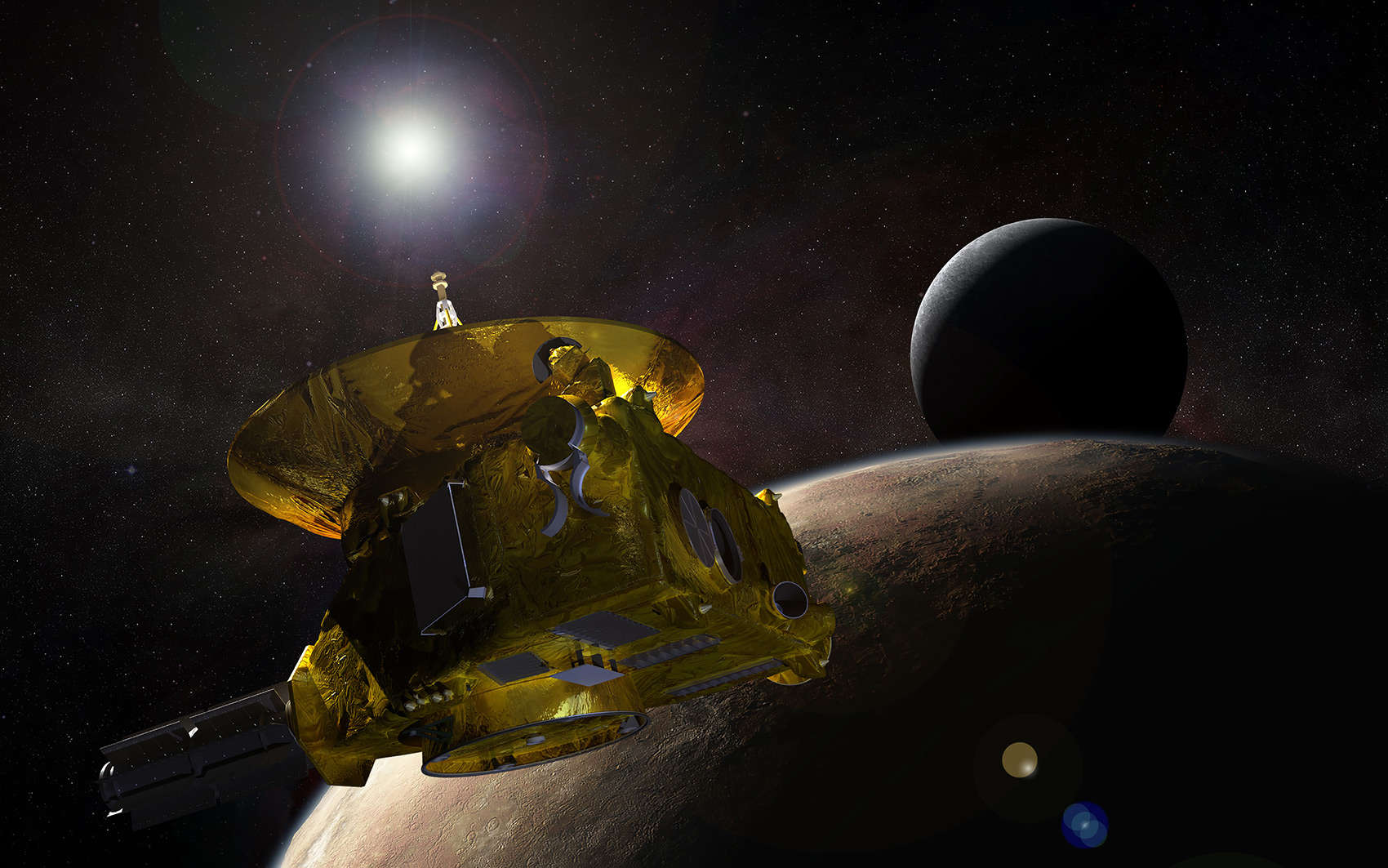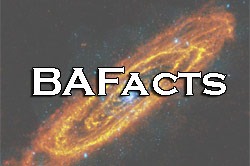Create a free profile to get unlimited access to exclusive videos, sweepstakes, and more!
BAFact math: How bright is the Sun from Pluto?

 [On January 4, 2012, I started a new features: BAFacts, where I write an astronomy/space fact that is short enough to be tweeted. A lot of them reference older posts, but some of the facts need a little mathematical explanation. When that happens I'll write a post like this one that does the math so you can see the numbers for yourself. Why? Because MATH!]
[On January 4, 2012, I started a new features: BAFacts, where I write an astronomy/space fact that is short enough to be tweeted. A lot of them reference older posts, but some of the facts need a little mathematical explanation. When that happens I'll write a post like this one that does the math so you can see the numbers for yourself. Why? Because MATH!]
Today's BAFact:
From Pluto, the Sun is fainter than it is from Earth, but still can be 450x brighter than the full Moon.
I remember reading a science fiction story many years ago which took place on Pluto. The author described the Sun as being so faint that it looked like just another bright star (too bad I don't remember the name of the story anymore). I was thinking about that again recently, and wondered just how bright the Sun does look from Pluto. This turns out to be pretty easy to calculate!
First, you need to understand how an object like the Sun -- really, any source of light -- dims with distance. The Sun emits light in all directions, so as you get farther away from the Sun, that light gets spread out. Imagine a sphere perfectly encasing the Sun right at its surface. Each square centimeter has a certain amount of light passing through it. If I double the size of the sphere, there's a lot more surface area to that sphere, but the total amount of light passing through it hasn't changed. Therefore the amount of light passing through each square centimeter has dropped. Since I doubled the sphere's diameter, I can figure out how much its dropped, too!
The formula for the surface area of a sphere is
Surface area = 4 x pi x radius2
If I double the size of the sphere, everything on the right side of the equation stays the same except for the radius, which is now twice as big. Therefore the area increases by 22 = 4. So the light passing through each square centimeter of the bigger sphere drops by a factor of four. Someone standing on that sphere would see the Sun being 1/4 as bright as if they were on the surface.
If I make the sphere ten times bigger, the area goes up by 10 Ã 10 = 100 times, and the brightness drops by 100. You get the picture.
So now we're ready to figure out how bright the Sun is from Pluto!
The Earth orbits the Sun, on average, at a distance of about 150 million km. Pluto has a very elliptical orbit, but has an average distance of about 5.9 billion kilometers, or roughly 39 times the Earth's distance from the Sun. Using the method above, the Sun must be 392 = about 1500 times fainter, or more grammatically correctly, 0.00065 times as bright. That's pretty faint!
Or is it? Well, let's compare that to how bright the full Moon looks from Earth. To us here at home, the Sun is about 400,000 times brighter than the full Moon, so even from distant, frigid Pluto, on average the Sun would look more than 250 times brighter than the full Moon does from Earth!
Pluto's orbit is also highly elliptical, stretching from 4.4 billion km to just over 7.3 billion km from the Sun. Doing the math again, that means the Sun goes from being 0.0012 to 0.0004 as bright as it is from Earth: a range of roughly 150 to 450 times as bright as the Moon from Earth. That's a change in brightness by a factor of three!
Still, given that you can read by the light of the full Moon, obviously the Sun from Pluto is still pretty dang intense. It would hardly look like just any other star: it would greatly outshine everything else in the sky. Painful to look at, most likely. So the short story I read was wrong, but at least we learned something. That's a decent trade.
And let me leave you with a question: From Pluto, how big would the Sun look? Ah, that's a BAFact for another day. Tomorrow, actually!



























